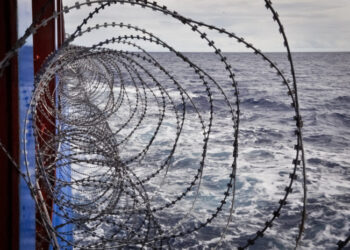Piracy and armed robbery in the Asian region has been evolving over time. It should be noted that piracy and armed robbery in Asia differs significantly from that of Somalia-based piracy. While Somalian-based pirates generally attacked ships in order to hijack them and then hold the crew for ransom, the type of criminal activity occurring in Asian waters generally revolves around theft of personal property and hijacking of ships for the purpose of cargo theft. Although the common modus operandi in the region has not changed significantly in the last decade, there were some trends in recent years which have attracted attention. A new regional guide was jointly published to help operators avoiding attacks of piracy and armed robbery against ships in Asia.
ReCAAP ISC in collaboration with Asian Shipowners’ Forum (ASF), Federation of ASEAN Shipowners’ Associations (FASA), Information Fusion Centre (IFC), INTERTANKO, Oil Companies International Marine Forum (OCIMF), S. Rajaratnam School of International Studies (RSIS) and Singapore Shipping Association (SSA) published a new regional guideto counter piracy and armed robbery against ships in Asia.
Geographical Location
Piracy and armed robbery against ships in Asia varies in approach, so it is difficult to predict the area where a ship might fall victim to piracy or armed robbery. The IFC Voluntary Reporting Area (VRA) is a clearly defined voluntary reporting area, so ship operators and ships transiting, trading or operating in Asia can join a trusted reporting scheme. The IFC encourages ships in the VRA to report to IFC using the reporting format described in Marsec Charts Q6112 and Q6113 when entering the VRA
Acts of piracy and armed robbery have occurred in the Straits of Malacca and Singapore (SOMS), the southern portion of the South China Sea, within the Indonesia archipelago and at certain ports and anchorages in Asia. For incidents involving tankers for theft of oil cargo, the majority of these occurred within the southern portion of the South China Sea.
Ships should be alert when operating in areas of concern, particularly when they slow down, stop or anchor in areas where attacks are known to occur.
The guide splits criminal activity within Asia into the following categories:
Armed Robbery – In general this is opportunistic, sometimes violent, and occurs where ships are in coastal waters. Ships are particularly vulnerable when at anchor or when the bridge team are involved in navigating through congested waters and island groups. Theft whilst underway occurs in the SOMS, particularly those in the eastern approaches in the Singapore Strait and the South China Sea.
Hijacking – The primary intent is the theft of oil cargo and it is noted that, regionally, these attacks are often referred to as siphoning incidents. Attacks have normally occurred during hours of darkness. They occur primarily in the southern region of the South China Sea; however, several attacks have occurred in the Malacca Strait
Methodology – Unlike pirates in the Gulf of Aden and West Africa whom are known to use high speed skiffs and long ladders in boarding ships, the perpetrators in Asia often adopt the profile of fishing boats to avoid being noticed and use a variety of tools including poles, hooks and lines to board ships. Additionally, due to the distances involved, the use of motherships has not become widespread.
The guide strongly recommended that ship operators adopt the following company planning procedures when operating in the region. Prior to entering the area:
- Jointly conduct risk assessment with the Master.
- Obtain the latest information from the ReCAAP ISC, IFC, IMB, IMO and other relevant regional agencies.
- Review the SSA and SSP
- Put SSP in place
- Monitor piracy related websites on specific threats
- Offer guidance to Master with regard to the recommended route
- Plan and install Ship Protection Measures
- Tracking
- Conduct crew training
- Obtain contact details
- Participate in the VCR scheme
The following important advice should be noted:
• Communications with external parties should be kept to a minimum, with close attention paid to organising rendezvous points and waiting positions. For e-mail correspondence to Agents, Charterers, Chandlers etc. it is strongly recommended that address lists are controlled and that information within the e-mail is concise, containing the minimum that is legally required in order to fulfil requirements or contractual obligations.
• Know your agents and avoid or minimize requirements where possible. Unnecessary interaction with other parties creates opportunities for information regarding the ship’s position to be compromised.
• If the ship trades regularly in the region it is recommended to make varied arrangements whenever possible to make it difficult for criminals to predict where operations or voyage might take place.
Further information may be found by reading the guide
Source: ReCAAP































































